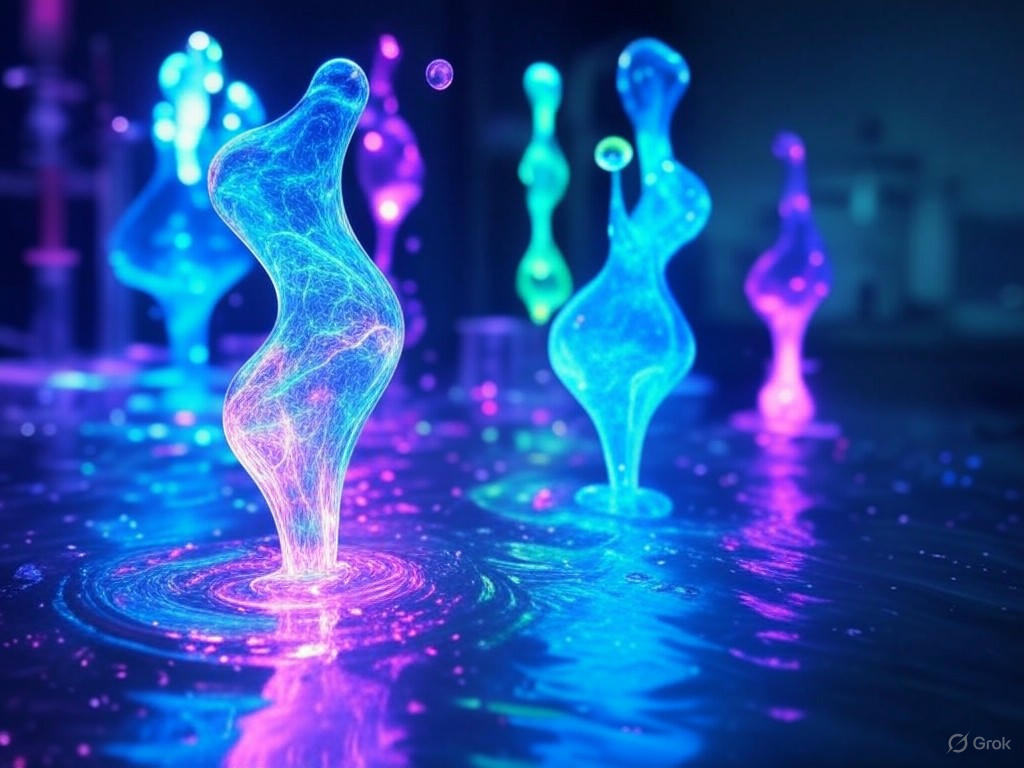
Quantum Gas Unexpectedly Transforms into Liquid
A Quantum Leap in Physics
Have you ever wondered what happens when the building blocks of matter defy our expectations? Picture this: scientists have just witnessed a quantum gas suddenly behaving like a liquid, flipping traditional physics on its head. This unexpected shift not only deepens our grasp of quantum gas behaviors but also sparks fresh ideas for quantum computing and cutting-edge materials.
Demystifying Quantum Gas
What exactly is a quantum gas? It’s a collection of atoms chilled to near absolute zero, where quantum quirks take center stage and particles move in sync like a perfectly tuned orchestra. Unlike everyday gases, a quantum gas reveals phenomena that bend our classical understanding, such as particles acting as one unified entity.
Core Traits of Quantum Gas
- Thrives at temperatures mere billionths of a degree above absolute zero
- Displays wonders like Bose-Einstein condensation, where atoms merge into a single quantum state
- Unveils collective behaviors that classical gases can’t touch, from superfluidity to unexpected stability
This setup makes quantum gas a playground for exploring the universe’s oddities, and recent experiments are showing it’s even more versatile than we thought.
The Astonishing Shift from Gas to Liquid
Imagine watching a quantum gas morph into something liquid-like right before your eyes—that’s what researchers achieved through capillary instability, a trait usually reserved for everyday liquids. By working with ultra-cold atomic droplets, they found these gaseous forms stabilizing into structures that mimic liquids, all thanks to quantum forces at play.
Key Experimental Insights
- Teams cooled atom groups to create these quantum droplets, observing them merge and ripple just like liquid drops
- This change happened solely due to quantum mechanics, without any classical triggers
- It’s a game-changer, proving quantum gas can adapt in ways we never anticipated
Ever seen rain form from clouds in slow motion? That’s a bit like what happens here, but on an atomic scale, challenging us to rethink how matter transitions.
Capillary Instability: Unveiling the ‘Quantum Rain’ Phenomenon
At the heart of this discovery is capillary instability, where a quantum gas breaks into droplet patterns, much like water streams fragmenting under gravity. Scientists dubbed it ‘quantum rain,’ capturing the moment these atomic ensembles form beaded structures that echo liquid dynamics.
How Capillary Instability Shapes Quantum Matter
- It highlights quantum effects strong enough to rival those in traditional liquids
- Opens doors to finer control over atomic interactions, potentially revolutionizing material design
- Pushes us to investigate instabilities in new ways, blending quantum and classical worlds
If you’re curious, think about how this could help in creating self-assembling materials—pretty cool, right?
Unpacking Quantum Liquids: What’s So Special About Them?
Quantum liquids stand apart from regular ones because they’re driven by quantum coherence, where particles stay in harmony through fluctuations and forces. In a quantum gas, these liquids form from a delicate balance of attractions and repulsions, leading to self-sustaining droplets that don’t need external help to hold together.
| Property | Classical Liquid | Quantum Liquid |
|---|---|---|
| Origin of Cohesion | Ties like van der Waals forces | Fueled by quantum fluctuations and zero-point energy |
| Stability | Needs containers or gravity | Sustains itself via quantum effects |
| Temperature Range | From melting points upward | Down in the nanoKelvin realm |
| Observability | Easily seen on a macro scale | Requires high-tech imaging for microscopic views |
This comparison shows how quantum gas-derived liquids could inspire tech that operates in extreme conditions.
The Importance of Quantum Phase Transitions
Why should we care about the gas-to-liquid leap in quantum gas systems? It’s a prime example of a quantum phase transition, where changes stem from interaction tweaks rather than temperature shifts. These transitions birth unique states like superfluids and quantum droplets, expanding our toolkit for innovation.
Practical Uses on the Horizon
- Bolstering quantum sensors with these phase properties for ultra-precise measurements
- Crafting stable qubits to supercharge quantum computing efforts
- Building advanced simulation platforms that mimic complex systems
- Designing quantum fluids for applications in everything from medicine to energy
Could this lead to devices that solve problems faster than ever? It’s an exciting possibility worth exploring.
Delving into the Discovery’s Science
The magic behind turning a quantum gas into a liquid involves pushing atoms to nanoKelvin temperatures and tweaking magnetic interactions. Researchers fine-tuned these settings to trigger droplet formation, revealing how small adjustments can lead to big breakthroughs.
Innovative Methods Used
- Laser and evaporative cooling to chill atomic clouds
- Precise magnetic controls to adjust atom interactions
- Advanced imaging techniques to track and analyze droplet evolution
It’s like conducting a symphony at the atomic level—what if we applied similar techniques to other quantum puzzles?
Contrasting Quantum Droplets with Other Quantum States
In the family of quantum states, droplets from a quantum gas shine for their self-bound stability, setting them apart from Bose-Einstein condensates or superfluids. While all involve collective particle behavior, quantum droplets hold their shape without external aids, offering unique advantages.
| State | Key Feature | Typical Conditions |
|---|---|---|
| Bose-Einstein Condensate | Particles in a shared quantum state | Near absolute zero with weak interactions |
| Superfluid | Faultless, frictionless flow | Under specific quantum conditions, like helium at low temps |
| Quantum Droplet | Liquid-like stability from quantum forces | Ultra-cold with carefully tuned interactions |
This variety in quantum gas states could be the key to tailoring materials for specific needs.
Looking Ahead: Implications and Future Paths
As we master these transitions in quantum gas, the potential for tech leaps is immense—from engineering custom quantum materials to testing theoretical limits. This discovery might even inspire solutions for real-world challenges, like more efficient energy systems or advanced computing.
Broader Effects Over Time
- Deepening knowledge of phase changes in harsh environments
- Fostering quantum-enhanced tools and gadgets
- Refining models for high-accuracy tech
- Sparking more research in condensed matter and quantum info
Here’s a tip: stay tuned to quantum developments—they could reshape how we interact with technology daily.
Wrapping Up: A Fresh Era in Quantum Exploration
The transformation of a quantum gas into a liquid isn’t just fascinating—it’s a bridge between worlds that could accelerate quantum tech forward. As we ponder these findings, let’s consider how they might influence everyday life, from smarter devices to bolder scientific quests.
We’d love to hear your thoughts: What excites you most about this quantum shift? Share in the comments, explore more on our site, or spread the word to fellow science enthusiasts.
References
- Unexpected: a quantum gas turns into a liquid. Techno-Science. Link
- Scientists observe exotic quantum phase once thought impossible. Phys.org. Link
- Quantum Rain Falls: Ultracold Atoms Unleash Liquid Secrets. SciTechDaily. Link
- Second wave superfluid existence. Popular Mechanics. Link
- Scientists find elusive liquid transition deep within matter. Phys.org. Link
- Video on quantum phases. YouTube. Link
- Discovery of water’s two distinct liquid phases. Techno-Science. Link
- Another quantum video. YouTube. Link
quantum gas, quantum liquid, quantum phase transition, ultracold atoms, capillary instability, Bose-Einstein condensation, superfluidity, quantum droplets, quantum physics, quantum technology







